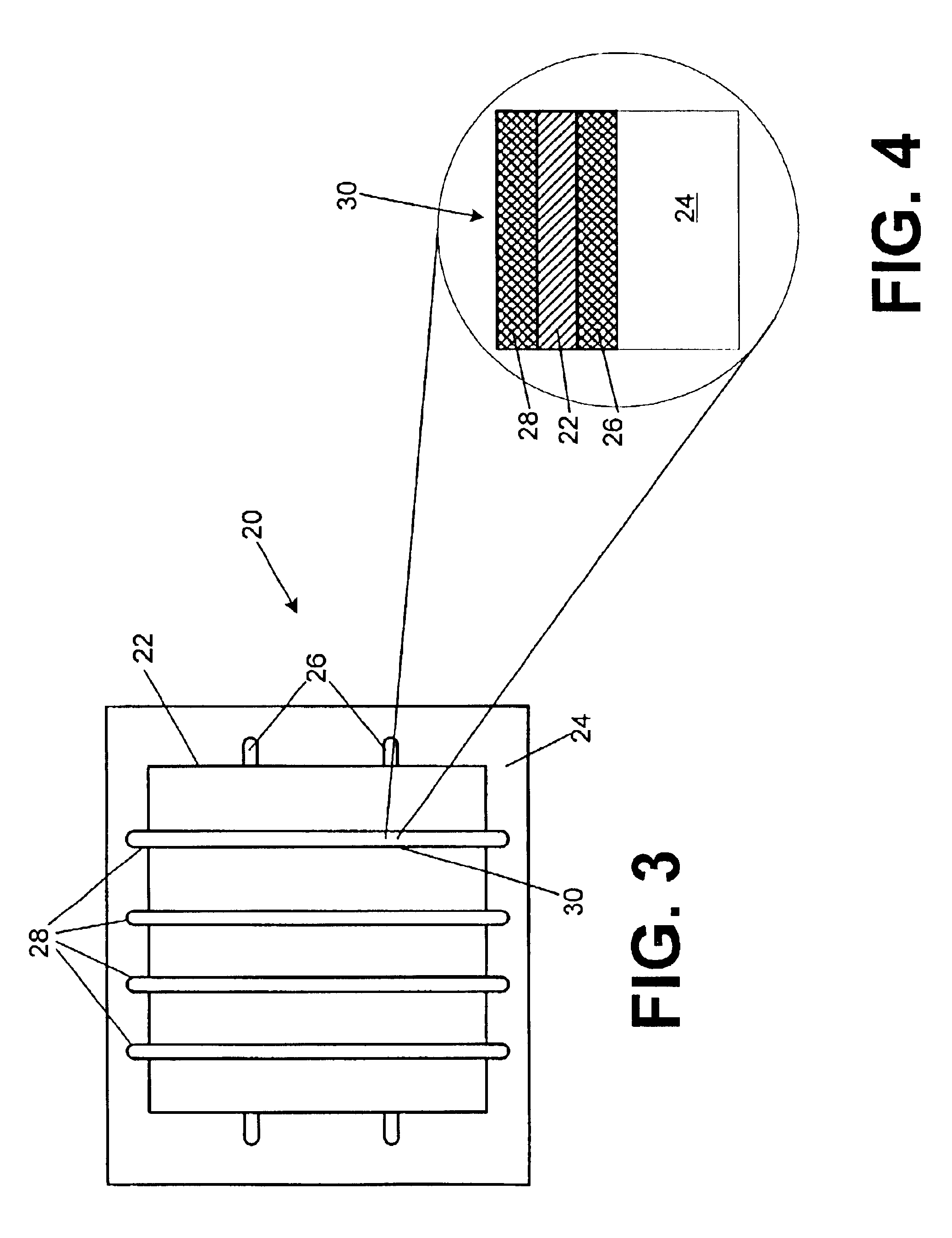Thin film battery and electrolyte therefor
a thin film battery and electrolyte technology, applied in the field of thin film batteries, can solve the problems of high corrosiveness, leakage of liquid electrolytes, etc., and achieve the effects of delivering more power and energy, increasing the lithium ion conductivity of the electrolyte of the invention, and relatively low conductivity
- Summary
- Abstract
- Description
- Claims
- Application Information
AI Technical Summary
Benefits of technology
Problems solved by technology
Method used
Image
Examples
Embodiment Construction
As set forth above, the invention provides an improved thin-film battery electrolyte and method for making the electrolyte. The electrolyte of the invention includes a solid lithium phosphorus oxynitride (LIPON) electrolyte. According to the invention, the LIPON-based electrolyte is improved by incorporating therein a sulfide ion. The amount of sulfide ion in the electrolyte composition is preferably expressed in terms of a sulfide ion to phosphorus ion ratio (S / P). The S / P ratio preferably ranges from greater than zero up to about 0.2, more preferably from about 0.10 to about 0.15, and most preferably abut 0.15.
Electrolytes of the invention incorporating a sulfide ion are preferably solid amorphous compositions represented by the following formula:
where 2x+3y+2z=5+w, x ranges from about 3.2 to about 3.8, y ranges from about 0.13 to about 0.46, z ranges from greater than zero up to about 0.2, and w ranges from about 2.9 to about 3.3. Compositions of the foregoing formula, preferably...
PUM
| Property | Measurement | Unit |
|---|---|---|
| Percent by atom | aaaaa | aaaaa |
| Percent by atom | aaaaa | aaaaa |
| Percent by atom | aaaaa | aaaaa |
Abstract
Description
Claims
Application Information
 Login to View More
Login to View More - R&D
- Intellectual Property
- Life Sciences
- Materials
- Tech Scout
- Unparalleled Data Quality
- Higher Quality Content
- 60% Fewer Hallucinations
Browse by: Latest US Patents, China's latest patents, Technical Efficacy Thesaurus, Application Domain, Technology Topic, Popular Technical Reports.
© 2025 PatSnap. All rights reserved.Legal|Privacy policy|Modern Slavery Act Transparency Statement|Sitemap|About US| Contact US: help@patsnap.com



